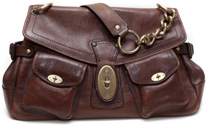Why You Shouldn't Keep Too Much Excess Inventory On Hand.

Inventory is the stock of goods and materials that a business keeps on hand in order to meet customer demand. It is one of the most important assets for many businesses, and managing it effectively is essential to profitability. There are a number of factors that businesses need to consider when determining how much inventory to keep on hand. These include:
- Customer demand: Businesses need to have enough inventory on hand to meet customer demand without running out of stock. However, they also need to avoid having too much inventory sitting in the warehouse,as this can lead to high storage costs and inventory obsolescence, closeouts, overstock inventory and excess inventory that must be liquidated.
- Lead time: Lead time is the time it takes for a business to receive inventory once it has placed an order with a supplier. Businesses need to factor in lead time when determining how much excess inventory to keep on hand, as they need to have enough stock to last until the next order arrives without having liquidation inventory and closeouts that must get discounted to move out of the warehouse.
- Safety stock: Safety stock is a buffer of extra inventory that businesses keep on hand in case of unexpected demand surges or supply chain disruptions. Again, there is a fiine line between having the right amount of product and too much excess inventory.
- Inventory costs: Inventory costs include the cost of goods sold, storage costs, and insurance costs. Businesses need to balance the cost of keeping inventory on hand with the risk of running out of stock.
- Discounts and promotions: Businesses can offer discounts and promotions on closeouts and excess inventory to encourage customers to buy them. This is an effective way to have the liquidation process while keeping enough inventory in the warehouse. Keep in mind liquidation stock can be cleared from the warehouse, but it may only be sold for a small amount of money.
- Clearance sales: Businesses can hold clearance sales to sell off closeouts and excess inventory at a discounted price. We call this the closeout process or liquidation process. If you have unwanted inventory and want to clear stock from the warehouse this is the best way to go.
- Liquidation: Businesses can sell closeouts and excess inventory to liquidators, who specialize in buying and selling distressed inventory. If you are looking for a liquidation company, you can try a simple Google search using search terms like these: closeouts, closeout brokers, how to get rid of too much inventory, where can I find buyers for my excess stock, sell bulk inventory and closeout merchandise.
- Donation: Businesses can donate closeouts and excess inventory to charities or non-profit organizations.
- Hiring a liquidator: Businesses typically hire a closeout liquidator to sell off their inventory. Liquidators have experience in selling distressed inventory and can help businesses to get the best possible price for their goods. If you manage your excess inventory on a regular business you may not have to have a large liquidation sale. It is better to make room in the warehouse as you need it, get rid of overstock inventory as you go along and don't wait until there is no room in the warehouse for new products arriving.
- Preparing the inventory: Businesses need to prepare their overstock inventory for liquidation by sorting it, grading it, and pricing it. You will need a plan to dispose of excess inventory by either using closeout websites and closeout brokers, or selling direct to consumers. In any case, if you wait until the warehouse is too crowded with old inventory and abandoned inventory, you have waited to long to liquidate.
- Marketing the inventory: Liquidators will typically market the inventory to a variety of buyers, such as retailers, wholesalers, and auction houses.
- Selling the inventory: Once the overstock inventory has been marketed, the liquidator will begin selling it to buyers. The most common products are closeout housewares, overstock pet products, and excess inventory of lawn and garden closeouts.
- Selling it at a discount: Businesses can sell old inventory at a discount to encourage customers to buy it. Warehouse liquidation sales can be an effective way to find closeout buyers who will visit your warehouse and take everything in one fell swoop. If you are closing your warehouse you can find companies that will liquidate overstock inventory directly from your facility.
- Donating it: Businesses can donate old inventory and unwanted merchandise to charities or non-profit organizations. This is effective if you need more space in your warehouse and just need to get rid of inventory that is in the way. Also, it is a tax deduction for products you cannot sell.
- Recycling it: If the inventory is recyclable, businesses can recycle it to reduce their environmental impact.
- Disposing of it: If the overstock inventory is not recyclable or cannot be donated, businesses may need to dispose of it. This should be done in a responsible manner, such as through a licensed waste disposal company.
How to Calculate How Much Inventory to Keep on Hand
There are a number of different ways to calculate how much inventory to keep on hand. One common method is to use the following formula:
Inventory level = (Average daily sales * Lead time) + Safety stock
Average daily sales can be calculated by dividing the total number of units sold over a period of time by the number of days in that period. Lead time can be obtained from suppliers. Safety stock can be calculated by multiplying the average daily sales by a safety factor. The safety factor will vary depending on the type of business and the industry it is in. If a business sells an average of 100 units per day. It has a lead time of 7 days and wants to keep a safety stock of 10% of its average daily sales.
Inventory level = (100 units/day * 7 days) + (100 units/day * 0.10) = 700 units + 10 units = 710 units
This means that the business should keep 710 units on hand at all times.
How to Get Rid of Closeouts, Overstock, Liquidation Stock and Excess Inventory
There are a number of ways to get rid of closeouts and excess inventory. Some of the most common methods for selling overstock products:
Liquidation Process
Liquidation is the process of selling off assets at a discounted price in order to generate cash quickly. Businesses often liquidate their inventory when they are going out of business or when they need to raise cash quickly to cover unexpected expenses. A business may also have the need for an inventory liquidation if the business owner is shutting down operations or downsizing warehouses.
The liquidation process typically involves the following steps:
Getting Rid of Old Inventory
Getting rid of old inventory can be a problem for businesses, as it can take up valuable storage space and tie up cash. There are a number of ways to get rid of old inventory to make room for new products.
Merchandise USA is a reliable and professional inventory liquidator in business 38 years. We buy closeout housewares, closeout home décor and excess inventory of pet products, overstock lawn and garden products, toys, sporting goods and more. We help companies in liquidation with the closeout process and can walk you through the inventory liquidation sale. If you have unwanted inventory to liquidate you can contact us for an immediate quote. Don't let your overstock and closeout problem get out of control before liquidating.



